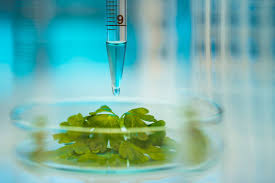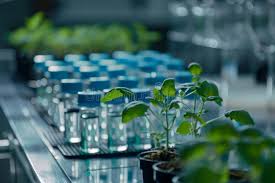Our natural ecosystems are subject to increasing pressures, and negative effects can already be seen in some regions of the world. In the years 1999–2000, 9.4 million hectares of forests were lost worldwide.
Tropical deforestation accounts for 20 percent of the world’s greenhouse gas emissions and the loss of essential terrestrial and freshwater resources for humanity, as well as critical habitats for endangered species.
Biotechnological innovations have been employed to replenish the natural abundance and transform low-quality species into highly desirable ones with recorded evidences.
In this article, it would be necessary to explore the historical and futuristic perspectives of biotechnology. The achievements in the biotechnological world will be considered, along with areas of focus for the future.
Read Also: Recommended Number of Ruminant Animals per Housing Unit for Fattening
Historical Advances in Plant Biotechnology

Plant biotechnology in use today is a product of advanced technology, which allows plant breeders to make precise genetic changes to impart beneficial traits to plants. This practice of plant biotechnology has been around for centuries.
The use of less advanced methods by early farmers and plant breeders to improve plants reflected their traditional breeding methods, which included selecting and sowing seeds from the strongest, most desirable plants to produce the next generation.
By selecting and breeding plants with characteristics such as higher yield, resistance to pests, and hardiness, these early farmers dramatically changed the genetic makeup of plants long before the science of genetics was understood. As a result, most of today’s plants bear little resemblance to their wild ancestors.
The tools of modern biotechnology allow plant breeders to select genes that produce beneficial traits and move them from one organism to another.
This process is far more precise and selective than crossbreeding, which involves the transfer of tens of thousands of genes and provides plant developers with more detailed knowledge of the changes being made.
The ability to introduce genetic material from other plants and organisms opens up a world of possibilities to benefit food production.
Indicators of Biotechnological Achievements
Important commercial plants that have been modified to resist viral infections include potatoes, squash, cucumber, watermelon, and papaya.
These plants resist viruses through a mechanism known as cross-protection, which is somewhat similar to immunization. Farmers growing these plants are able to reduce pesticide applications to control virus-carrying insects.
Other varieties, such as soybeans, corn, canola, and other crop plants, have been modified to tolerate safe, broad-spectrum herbicides. Herbicide tolerance allows farmers to use weed controls more selectively.
Rather than applying herbicide before planting, farmers can wait until after the crop emerges to apply herbicides where and in the quantities needed.
Read Also: Recommended Number of Ruminant Animals per Housing Unit for Fattening
Future Prospects in Biotechnological Achievements

New advances, including a promising array of products, will offer:
1. Improved yields: New biotechnological advancements will enhance crop productivity, leading to better yields.
2. Enhanced nutrition: Crops with improved nutritional qualities will help address malnutrition and provide healthier food options.
3. Medicinal properties and vaccines: Plants may be developed to produce medicinal compounds and vaccines, offering new methods of disease prevention.
4. Healthier cooking oils: Genetically modified crops could produce healthier oils, reducing the risks of cardiovascular diseases.
5. Extended shelf life: Biotechnology can extend the shelf life of fruits and vegetables, reducing food waste and providing longer-lasting products.
6. Renewable resources and industrial feedstocks: Modified plants could serve as renewable resources and industrial feedstocks, opening new markets for farmers and supporting sustainable industries.
These new varieties of plants could open up lucrative new markets for farmers and provide enhanced food products to consumers.
Do you have any questions, suggestions, or contributions? If so, please feel free to use the comment box below to share your thoughts. We also encourage you to kindly share this information with others who might benefit from it. Since we can’t reach everyone at once, we truly appreciate your help in spreading the word. Thank you so much for your support and for sharing!
Read Also: 4 Steps to help an Orange Tree Produce Sweet Oranges
Frequently Asked Questions
We will update this section soon.

